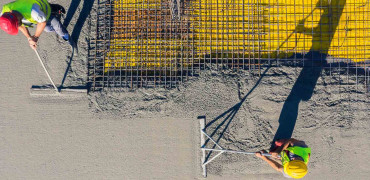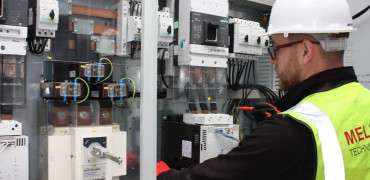Technology is changing how buildings are designed and constructed. Developments such as Building Information Modelling (BIM) and digital twinning are helping to deliver low-carbon buildings that deliver high performance over the long term.
At Mitsubishi Electric, we believe the application of technology also enhances service and maintenance and helps facilities teams deliver high-performing buildings.
It costs more to fix an issue than it does to anticipate and prevent it happening
Remote Monitoring
One important example of this is remote monitoring of buildings, which has become an increasingly common way to support facilities management.
Its growth in the property sector has been driven by more widely available internet-enabled sensors. Most leading manufacturers can provide equipment that is capable of internet connection.
Another important factor in remote monitoring has been the enhanced capability of computers to assess collected data quickly to produce actionable information. These sensors and connected equipment constantly monitor system performance.
Thousands of pieces of data are sent via the internet to monitoring centres that can almost immediately detect any deviation from required performance. This could include changes in indoor temperature; variation in chiller operation; a rise in CO2 levels in an office. These risks can be flagged and either corrected automatically or result in an engineer visit to correct the issue quickly.
Mitsubishi Electric has its own remote monitoring system, MELCloud. This logs errors and offers support information. It can also provide live controls, scenes and weekly or seasonal timers from a single device or location. This is ideal for busy facilities teams as it can save hours of travel time as well as ensuring that critical systems such as air conditioning operate efficiently and effectively.
Many benefits
There are many benefits to remote monitoring.
A faulty chiller that is detected on a service visit, means that it could have been operating less than optimally for several months.
This is not only a performance issue. An undetected fault may also cause excess energy use and additional operating costs.
At worst, the chiller may break down, leaving a building with reduced cooling in summer months, for example, and requiring an unplanned repair or even replacement.
Modern maintenance
Technology is moving maintenance away from the days when it was purely reactive.
Fixing faults is a short-term approach: It costs more to fix an issue than it does to anticipate and prevent it happening.
With remote analytics and data that enables better decision-making, FM teams are now able to advance towards planned preventative maintenance (PPM).
Not only does this approach reduce equipment downtime, PPM also extends the lifetime of equipment such as chillers, making the most of the capital investment.
At Mitsubishi Electric, we see this as the future for service and maintenance so our dedicated team is focused on helping deliver the technology that puts the capability into the hands of facilities teams.
Graham Martin is Business Development Manager



